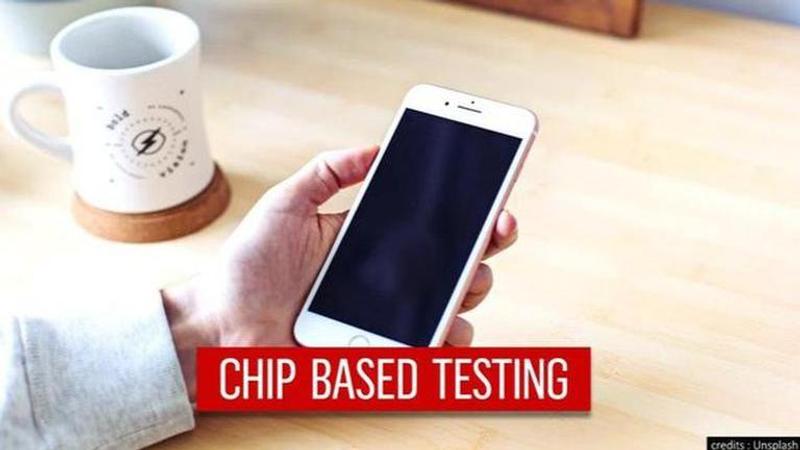Published 15:52 IST, February 26th 2021
Covid test result on your phone in an hour? US researchers develop 'Novel microfluid chip'
The scientists have relied on donated serum samples from healthy volunteers and those who tested positive for Covid-19 to test the chip-based system

Scientists at the Rice University in the US have developed a microfluidic chip that simplifies Covid-19 testing and delivers results on a smartphone in less than an hour. The chip measures the concentration of SARS-COV-2 nucleocapsid (N) protein that is a biomarker for Coronavirus, in blood serum from a standard finger prick, according to a study published in the ACS Sensors journal.
According to scientists, chip-based testing makes the process simpler when compared to swab testing. The nanobeads bind to SARS-COV-2 N protein in the microfluid chip and transport it to an electrochemical sensor that traces minute amounts of the biomarker. This way the researchers said "One can perform the complete test and generate results at the collection site, health clinic or even a medical shop. The entire system is portable and user-friendly."
The team that has developed this chip included a student from Rice University and lead author Jiran Li. They developed simple diagnostics making use of the 'existing biosensing tools', like a microneedle patch that was invented last year to diagnose malaria. The team discovered that the optimum time for the chip to sense SARS-COV-2 N protein at a concentration as low as 50 picograms per milliliter in whole serum, is 55 minutes.
The scientists have relied on donated serum samples from healthy volunteers and those who tested positive for Covid-19. The system that embeds this chip when paired with Google Pixel 2 phone and a plug-in potentiostat, was able to deliver a positive diagnosis with a concentration as low as 230 picograms for whole serum, PTI reported.
Peter Lillehoj of the varsity said "There are standard procedures to modify the beads with an antibody that targets a particular biomarker. When you combine them with a sample containing the biomarker, in this case, SARS-CoV-2 N protein, they bond together." Towards the final stages, a capillary tube delivers the sample to the chip that is then placed on a magnet that pulls the nanobeads to an electrochemical sensor coated with capture antibodies.
The beads with the capture antibodies generate electricity that is proportional to the concentration of the biomarker in the sample. The app on the phone then gets the signal through the potentiostat that reads the current and generates data. In case there are no Covid-19 biomarkers, the beads get washed away inside the chip and don't bind to the sensor.
Updated 15:52 IST, February 26th 2021




